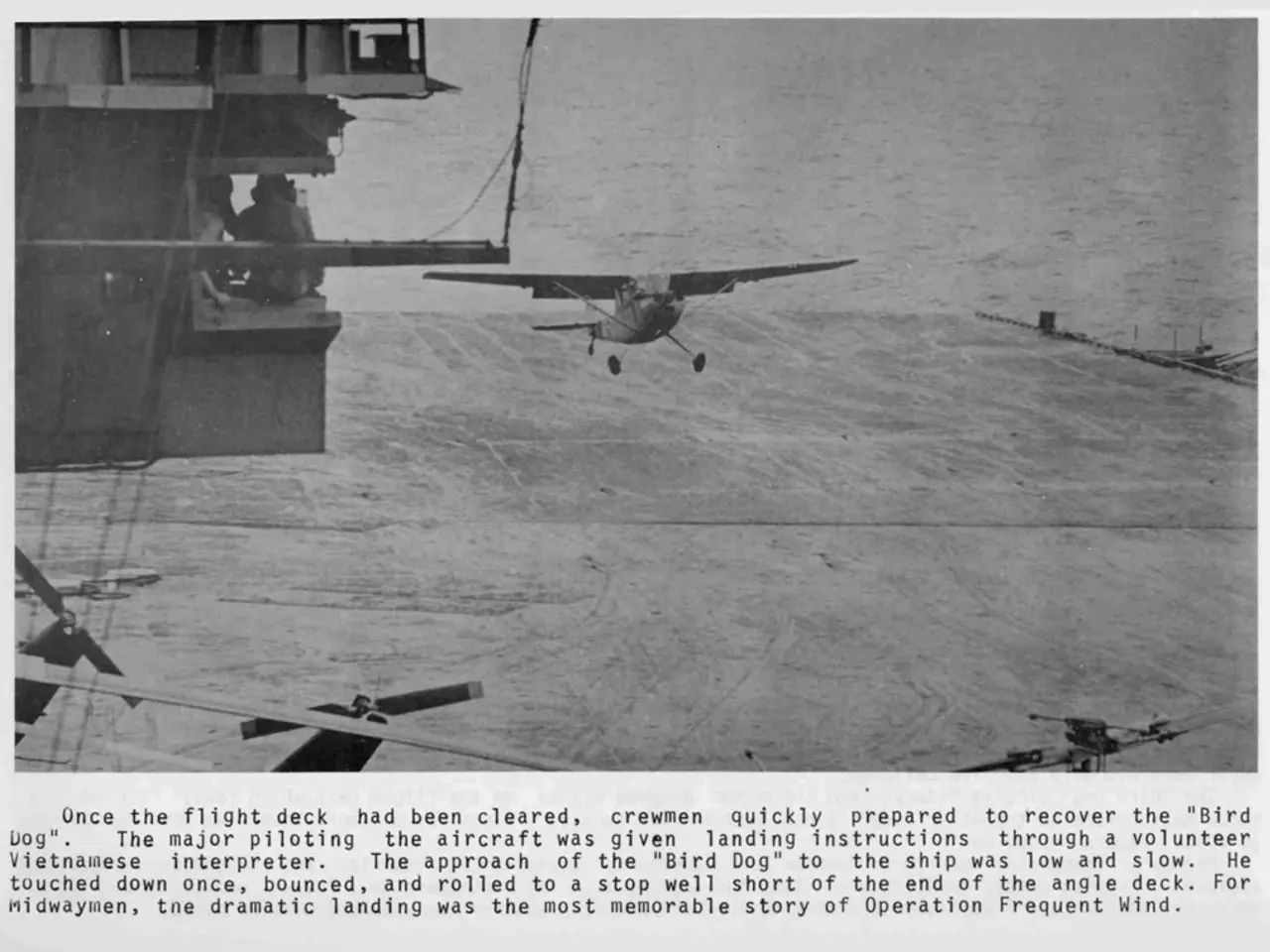Pentagon Encouraged to Maintain Pace with Advanced Engine Technology by GE
The development of the Next-Generation Adaptive Propulsion (NGAP) program, a crucial component for the F-47 and F/A-XX fighter programs, is currently facing significant delays. The prototype readiness, initially planned for late 2027, has been pushed back to around the second quarter of 2030.
The delay is primarily due to procurement and supply chain issues, as well as budget adjustments. The Air Force has confirmed a delay of over two years for NGAP, meaning the next-gen engine will not be ready before fiscal year 2030.
The NGAP technology is intended to provide adaptive cycle engines that can optimize performance in flight, enhancing fuel efficiency during cruise and increasing thrust when needed. This propulsion technology is designed to be "platform agnostic," supporting multiple future aircraft, specifically including the Air Force's F-47 fighter and the Navy's F/A-XX program.
Both major engine contractors, General Electric and Pratt & Whitney, hold contracts up to $3.5 billion each to develop NGAP engines. Both companies have completed detailed design reviews and anticipated beginning prototype fabrication early in 2025. However, the Air Force will eventually select a single vendor to advance.
The budget for NGAP has seen a reduction from $439.9 million in 2025 to $330.3 million in 2026, reflecting a shift in development phase despite the challenges.
The F-47 fighter may have to enter production without the NGAP engine due to these delays, meaning it might initially use existing engine technology. The Navy’s F/A-XX program also faces development challenges but continues to push forward with adaptive propulsion technology, with OEMs urging the Pentagon to maintain support for these critical advancements.
In the meantime, GE is partnered with Kratos on advancing propulsion technologies for affordable unmanned aerial systems by the end of the decade. GE also represents Italy as an equal propulsion partner in the Global Combat Air Program. Adaptive engine technology is a key component of the F/A-XX fighter program, and GE Aerospace CEO H. Lawrence Culp is urging the Pentagon to proceed with the Navy F/A-XX fighter program.
The White House has expressed concerns about the availability of engineering talent to develop both F/A-XX and F-47 simultaneously. Both GE and Pratt & Whitney claim they can deliver NGAP engines on the originally planned timeline.
The Navy recognizes the need for a sixth-generation fighter for operating in highly contested environments. The Navy has included the F/A-XX in its annual Unfunded Priorities List, requesting $1.4 billion. The White House claims that pursuing the F/A-XX may delay the higher-priority F-47 program.
Congress has included $750 million for the F/A-XX in the recent reconciliation package. Lockheed Martin CEO Jim Taiclet asserts that the F-47 may not be ready for five to 10 years. GE has made significant investments in test infrastructure at select manufacturing sites for hypersonic testing.
The Navy is participating in the Global Combat Air Program, a partnership between Italy, the U.K., and Japan to develop a sixth-generation fighter. The F/A-XX is a crucial part of this program, with GE contributing to its development.
In summary, the NGAP development effort for the F-47 is now expected to be ready in mid-2030, while the F/A-XX program continues to push forward with adaptive propulsion technology. The challenges in NGAP development, including delays and budget cuts, are causing concerns about the readiness of the F-47 and F/A-XX fighters.
- The Air Force's F-47 fighter may initially use existing engine technology due to delays in the Next-Generation Adaptive Propulsion (NGAP) program.
- The budget for NGAP has seen a reduction from $439.9 million in 2025 to $330.3 million in 2026, reflecting a shift in development phase.
- GE Aerospace CEO H. Lawrence Culp is urging the Pentagon to proceed with the Navy F/A-XX fighter program, as adaptive engine technology is a key component of the F/A-XX fighter program.
- The Pentagon is urged to maintain support for the adaptive propulsion technology in the Navy’s F/A-XX program, even as it faces development challenges.
- The Navy's F/A-XX program has been included in its annual Unfunded Priorities List, requesting $1.4 billion, despite concerns about its potential impact on the higher-priority F-47 program.








